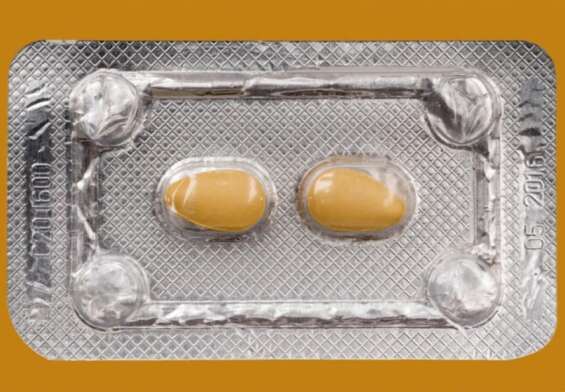
Veiny Penis? Guide To Keep Your Manhood Healthy & Confident!
Hey there, FitGAG readers! Are you worried about the appearance of your penis? Do you have noticeable veins that make you feel self-conscious? Well, fear not, because you’re not alone!
In fact, many men experience this issue at some point in their lives. But before you start panicking or searching for quick-fix solutions, it’s essential to understand what causes the veiny penis, how to diagnose it, and what treatment options are available.
In this article, we’ll delve into all the nitty-gritty details of this sensitive topic, so you can feel more informed, empowered, and confident about your manhood.
Understanding Penile Anatomy
When it comes to discussing a veiny penis, it’s important to first understand the basics of penile anatomy. The penis is made up of a complex system of blood vessels, nerves, and tissues that all work together to facilitate sexual function. In this section, we will explore the definition of penile anatomy, the normal appearance of the penis, the role of blood vessels in penile function, and how veins contribute to penile appearance.
Definition Of Penile Anatomy
Penile anatomy refers to the physical structure and composition of the penis. The penis is comprised of several key components, including the shaft, glans (head), foreskin (if present), and urethra (the tube that carries urine and semen out of the body). Additionally, there are several different types of tissues within the penis, including erectile tissue, smooth muscle, and connective tissue.
Normal Appearance Of The Penis
The appearance of the penis can vary widely from person to person, but generally speaking, a healthy penis will have a smooth and uniform appearance. The skin should be free of any lumps, bumps, or lesions, and the penis should be straight and free of any curvature or deformities. Additionally, the color of the skin may vary, but should be consistent across the entire penis.
Role Of Blood Vessels In Penile Function
Blood vessels play a crucial role in penile function. During sexual arousal, blood flow to the penis increases, causing the erectile tissue to become engorged and stiff. This process, known as an erection, is facilitated by the dilation of blood vessels within the penis.
How Veins Contribute To Penile Appearance
Veins are a type of blood vessel that carry blood back to the heart. In the case of the penis, veins are responsible for draining blood away from the erectile tissue after an erection has subsided. In some cases, veins in the penis may become enlarged or swollen, resulting in a more prominent appearance. This can sometimes be referred to as a “veiny penis.”
Understanding the basics of penile anatomy is an important first step in understanding the causes, symptoms, and treatment options for a veiny penis. By familiarizing yourself with the normal appearance and function of the penis, you will be better equipped to identify any potential concerns and seek appropriate medical attention if necessary.
Veiny Penis: Causes and Symptoms
If you’re experiencing a veiny penis and are concerned about its appearance, there are several treatment options that may be recommended by your healthcare provider. In this section, we will explore some of the most common treatments for a veiny penis, including cosmetic treatments, surgery, and other potential treatments.
Cosmetic Treatments
Cosmetic treatments are non-surgical procedures that aim to improve the appearance of the penis. These treatments may be recommended if the appearance of the veins in the penis is causing distress or self-consciousness. Some of the most common cosmetic treatments for a veiny penis include:
- Sclerotherapy: Sclerotherapy involves injecting a solution into the veins of the penis to cause them to collapse and fade from view.
- Laser therapy: Laser therapy uses a focused beam of light to destroy the blood vessels causing the appearance of a veiny penis.
- Topical creams: Topical creams containing vitamin K or retinol may help to reduce the appearance of veins in the penis.
Surgery
If non-surgical treatments are not effective or the appearance of the veins in the penis is causing physical discomfort, surgery may be recommended. Some of the most common surgical treatments for a veiny penis include:
- Vein ligation: Vein ligation involves tying off the veins in the penis to redirect blood flow away from the affected area.
- Microphlebectomy: Microphlebectomy involves removing small sections of the affected veins through tiny incisions in the skin.
Other Potential Treatments
In addition to cosmetic treatments and surgery, there are several other potential treatments for a veiny penis that may be recommended by your healthcare provider. These may include:
- Compression garments: Compression garments can help to improve blood flow and reduce the appearance of veins in the penis.
- Medications: Certain medications, such as alpha-blockers or anti-inflammatory drugs, may be recommended to improve blood flow and reduce inflammation in the penis.
It’s important to discuss all potential treatment options with your healthcare provider to determine the best course of action for your individual needs. With the right treatment plan, you can feel more confident and comfortable with the appearance of your penis.
Prevention of Veiny Penis
If you’re looking to prevent a veiny penis, there are several things you can do to reduce your risk. Some of the most effective prevention strategies include maintaining a healthy weight, exercising regularly, practicing good hygiene, and other lifestyle changes.
Here are some more details about each of these prevention strategies:
Maintaining A Healthy Weight
Being overweight or obese can increase your risk of developing a veiny penis, as well as other health problems. To maintain a healthy weight, you should focus on eating a balanced diet that’s rich in fruits, vegetables, whole grains, and lean protein. You should also limit your intake of processed foods, sugary drinks, and alcohol.
Exercising Regularly
Regular exercise can help improve your overall health and reduce your risk of developing a veiny penis. It’s recommended that adults get at least 150 minutes of moderate-intensity aerobic exercise or 75 minutes of vigorous-intensity aerobic exercise each week. In addition to aerobic exercise, you should also incorporate strength training exercises into your routine to help build and maintain muscle mass.
Practicing Good Hygiene
Good hygiene is essential for maintaining a healthy penis and reducing your risk of developing a veiny appearance. Here are some tips to help you maintain good penile hygiene:
- Wash your penis regularly with warm water and mild soap.
- Dry your penis thoroughly after washing.
- Use a clean towel each time you wash your penis.
- Wear clean, breathable underwear that fits properly.
Other Prevention Strategies
In addition to the above strategies, there are a few other things you can do to reduce your risk of developing a veiny penis. These include:
- Avoiding smoking and tobacco use, as they can contribute to poor blood flow and other health problems.
- Limiting your alcohol intake, as excessive drinking can lead to high blood pressure and other health problems.
- Managing any underlying medical conditions that could contribute to a veiny penis, such as high blood pressure or diabetes.
By following these prevention strategies, you can reduce your risk of developing a veiny penis and maintain good penile health. However, if you do notice any changes in your penis, it’s important to speak with a healthcare professional to determine the cause and appropriate treatment plan.
When to See a Doctor
While veiny penis is a common condition, it is important to know when to seek medical attention. Seeking the advice of a healthcare professional can help determine the underlying cause of the condition and ensure appropriate treatment.
Here are some scenarios when it is important to seek medical attention for veiny penis:
- If you experience pain or discomfort during sexual activity or when urinating.
- If the veins are noticeably enlarged and causing a change in penis appearance.
- If the veins are accompanied by other symptoms such as itching, redness, or swelling.
- If the condition is affecting your confidence or causing emotional distress.
Discussing concerns with a healthcare professional can also provide peace of mind and help alleviate anxiety related to the condition. It is important to remember that medical professionals are trained to provide confidential and non-judgmental care.
Furthermore, it is important to seek medical attention for any concerning symptoms related to sexual health. This includes any changes in appearance or function, as well as any pain or discomfort. Prompt medical attention can help identify potential issues and ensure appropriate treatment, ultimately leading to better overall health and wellbeing.
Conclusion
So, there you have it, FitGAG readers! We hope this article has shed some light on the veiny penis phenomenon and provided you with practical tips on how to prevent, diagnose, and treat this condition.
Remember, if you’re experiencing any concerning symptoms or have any doubts, don’t hesitate to seek medical attention from a qualified healthcare professional. And always remember to practice healthy lifestyle habits, such as maintaining a healthy weight, exercising regularly, and practicing good hygiene.
With the right knowledge, care, and mindset, you can keep your manhood healthy and confident for years to come. Thanks for reading, and stay fit and healthy with FitGAG!











